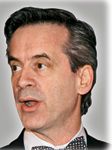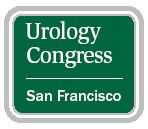Article
OAB agents: Similar in efficacy, but not identical
Author(s):
Agents in the pipeline but not yet approved are expected to expand the range of OAB treatment choices.

"There are no huge differences in efficacy, though all of these drugs are dose dependent," said Victor Nitti, MD, associate professor and vice chair of the department of urology at the New York University School of Medicine.
A new, still-investigational antimuscarinic, fesoterodine, is expected to receive FDA approval by early 2008, Dr. Nitti told the first annual Urology Congress here. It shares many similarities with other agents in the class.

But similarity does not make these drugs identical or freely interchangeable, Dr. Nitti added. Each drug has a slightly different metabolic side effect and safety profile, which makes for a number of real and theoretical differences between compounds. Some drugs have multiple doses that allow for dose flexibility. Finally, some agents have proven efficacy in patients with neurogenic detrusor overactivity, including oral oxybutynin chloride (Ditropan XL), trospium chloride (Sanctura), and tolterodine tartrate (Detrol LA).

Extended-release oxybutynin offers the widest dose titration and is the only antimuscarinic agent approved in the United States for high-dose administration. But it has demonstrated negative effects on cognitive function in healthy elderly patients. Oxybutynin TDS (Oxytrol), a transdermal patch, has the lowest incidence of antimuscarinic side effects, Dr. Nitti continued. But it is available in just one dosage and causes adverse skin reactions in between 10% and 20% of patients.
Tolterodine is the most commonly prescribed antimuscarinic. It has a long safety record, a favorable CNS profile, and solid data on use in male patients, but doses cannot be titrated above 4 mg (unless used off label), and the agent slightly increases the QT interval at supertherapeutic doses.
Trospium is not metabolized in the liver, as are other antimuscarinics, which usually makes it the preferred agent in patients with impaired liver function. Trospium also has fewer drug-drug interactions, is less likely to cross the blood-brain barrier, and shows a higher urine concentration than other antimuscarinic agents do. On the minus side, trospium increases the heart rate slightly. A once-daily, extended-release formulation of trospium (Sanctura XR) received FDA approval in August.
Solifenacin succinate (Vesicare) allows for dose titration and has a lower incidence of dry mouth than other antimuscarinics. It also shows a mild increase in QT interval at supertherapeutic doses.
Where does that leave clinicians? Probably trying multiple agents or titrating dosage to find the best fit with each patient, said David Staskin, MD, associate professor of urology and director of female urology and voiding dysfunction at Weill-Cornell Medical College in New York.
"You have to remember that OAB is a syndrome, a set of symptoms that are a little different in every patient," he warned. "Success in OAB is a combination of bother, efficacy, tolerability, and cost."
That quadruple balance is not likely to change as new agents enter the market, Dr. Staskin added. In addition to fesoterodine, clinicians can expect new formulations of familiar products, including an oxybutynin gel and oxybutynin vaginal ring, in the near future.
















